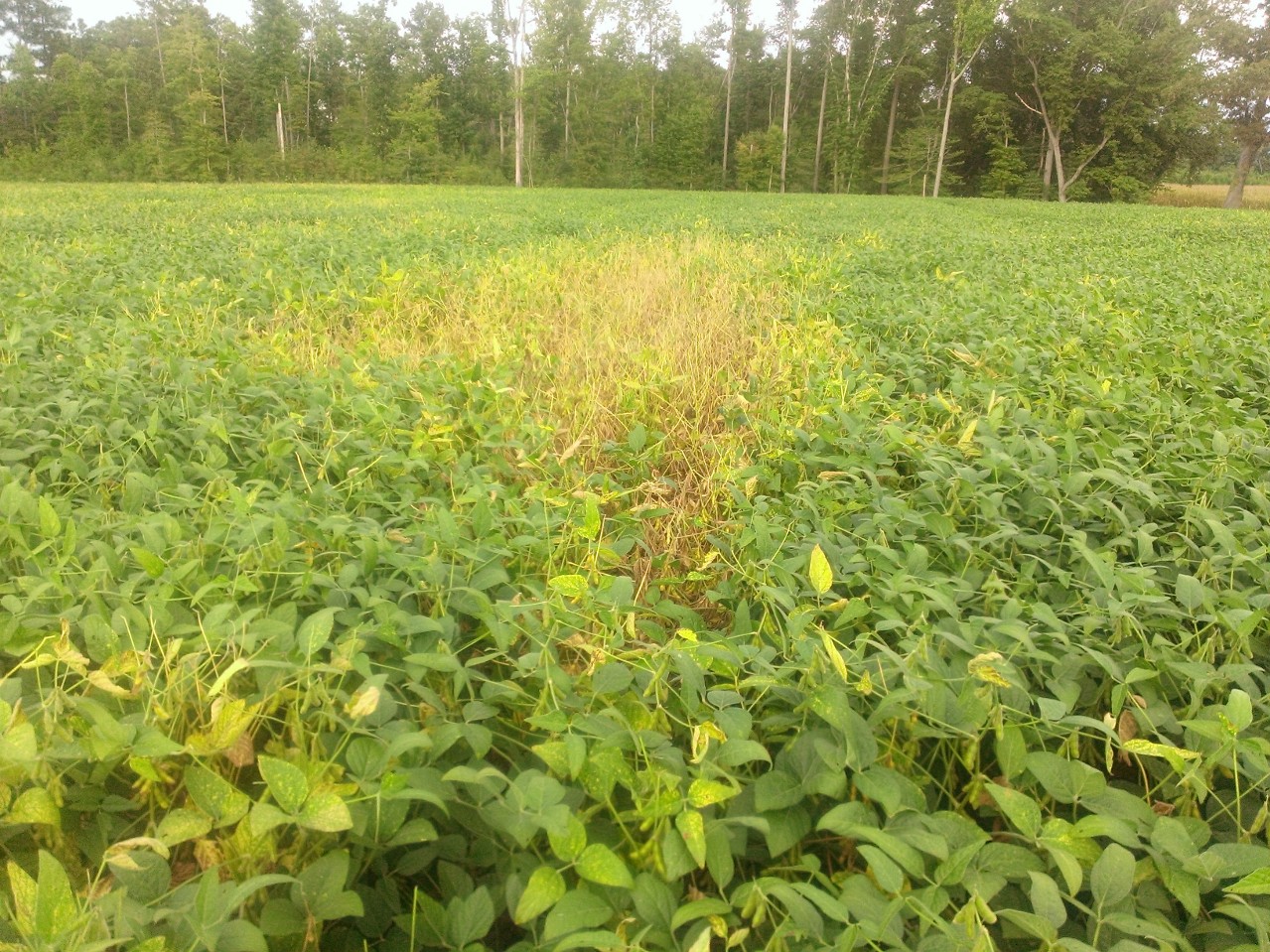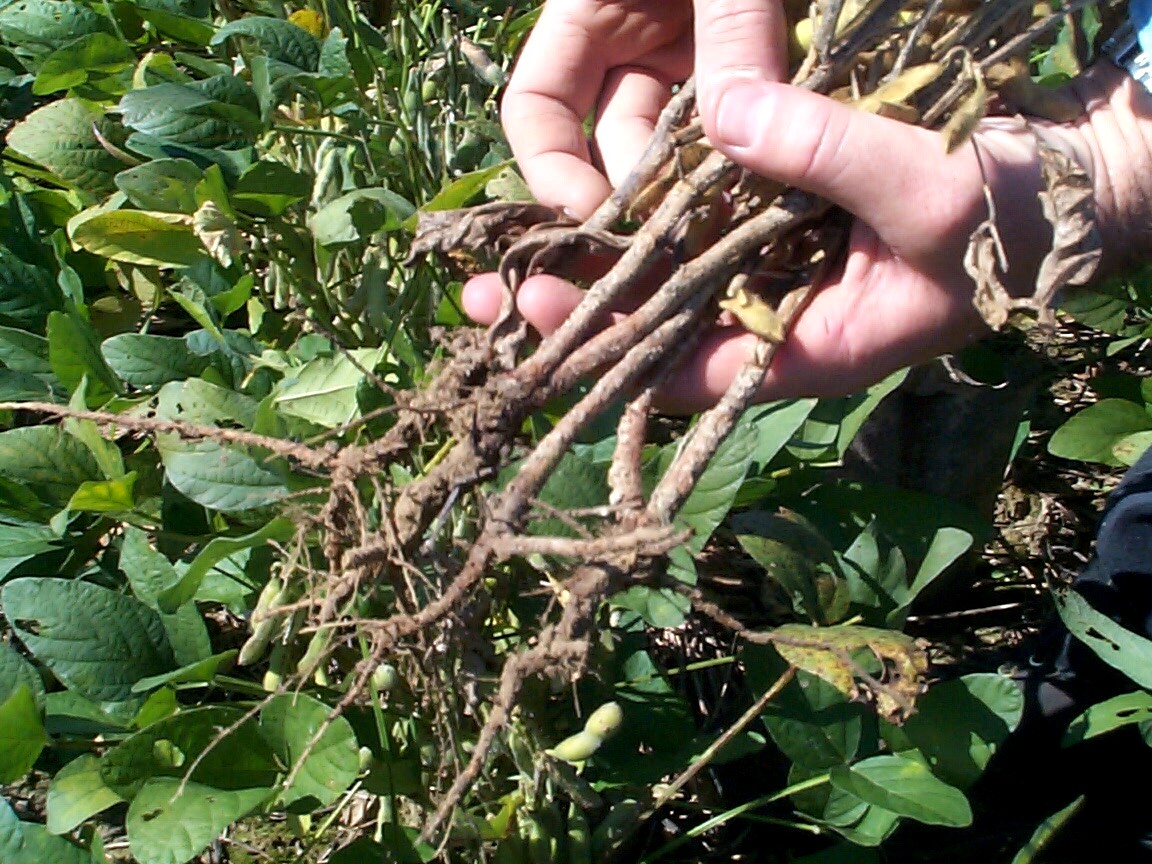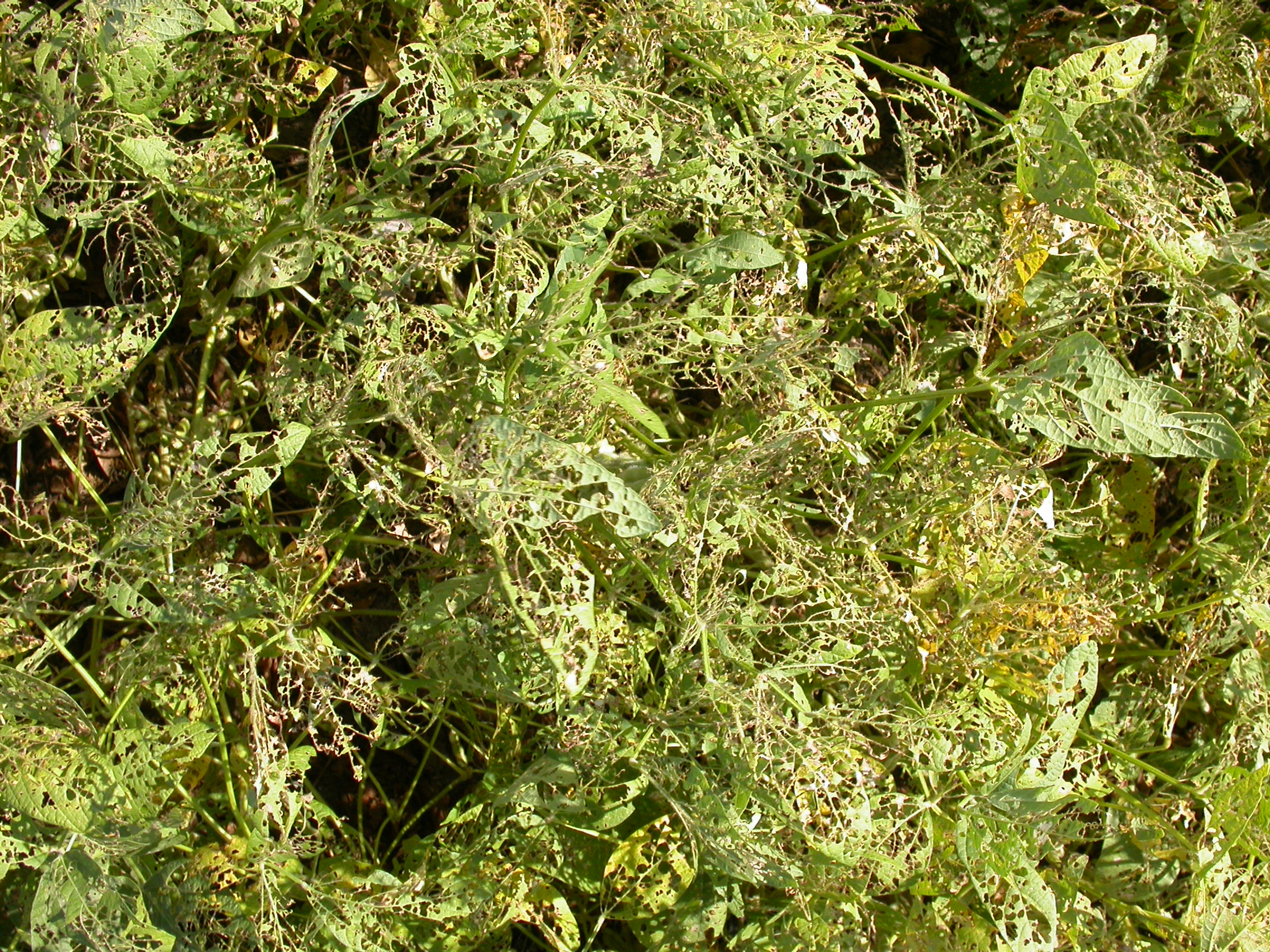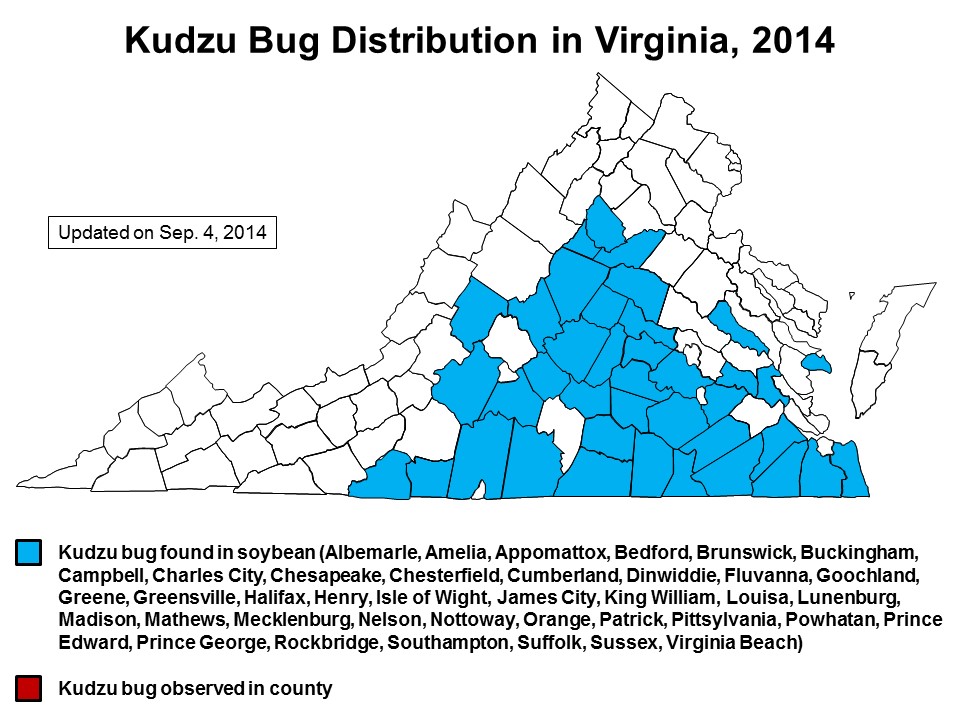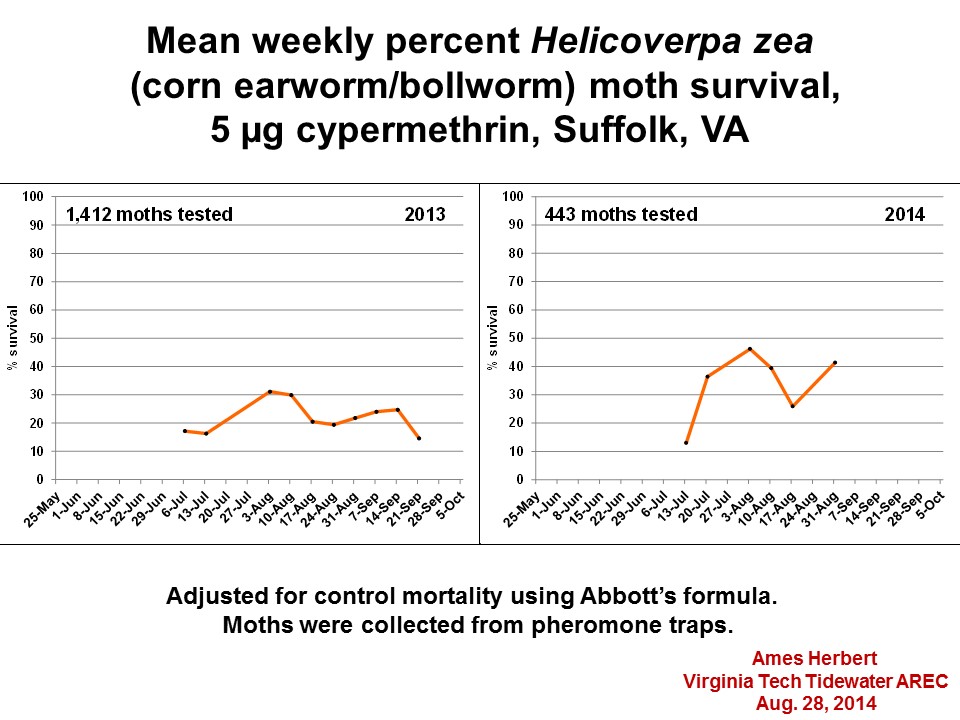There are many insecticide seed treatment combinations available on commercial field corn seed. Although there are only 4 main active insecticide ingredients involved (imidacloprid, thiamethoxam, clothianidin, and chlorantraniliprole), there are currently at least 20 different trade names with different combinations and amounts of active ingredient per seed. The chart provided here (see below) was created as a collaborative effort by corn entomologists from across the southeast. It shows the combination and rate of the active ingredients of each product and the relative efficacy against the most common soil pests. Because of the diversity of soil pests of corn in Virginia—depending on location, soil type, crop rotation system and history of pests—product selection should be made to fit each situation. This chart can be used to select the most effective product for the most common pests of a particular field. For example, if seed corn maggot has been a chronic pest, at least 8 products are ranked as Excellent (E rating on the chart) for controlling that pest—compared with only two products that provide Excellent control of wireworm. Hopefully this chart will be helpful when selecting the best insecticide seed treatments for next year’s field corn crop.
Category Archives: Pest Group
Field corn variety insecticide trait and herbicide tolerance chart
Field corn varieties provide a dizzying array of insect toxins—at least 14 different combinations by my count—that have very different degrees of efficacy against several corn pests. The chart provided here (see below) lists the current commercial varieties, the insect toxin combination they provide, and the relative efficacy of each against the most commonly encountered corn insect pests. The chart was created as a collaborative effort by corn entomologists from across the southeast, with guidance by two in particular, Kathy Flanders at Auburn University and Dave Buntin at University of Georgia. For our purposes in Virginia, I would pay the most attention to those varieties that provide Excellent (E rating on the chart) protection against corn earworm and fall armyworm, and if you are growing continuous corn, especially in the valley and piedmont regions, corn rootworm. The chart also provides the herbicide tolerance package of each variety, and the associated refuge requirement. Hopefully this chart will help you with your choice of seed in the next season.
Field corn insecticide trait and herbicide tolerance chart
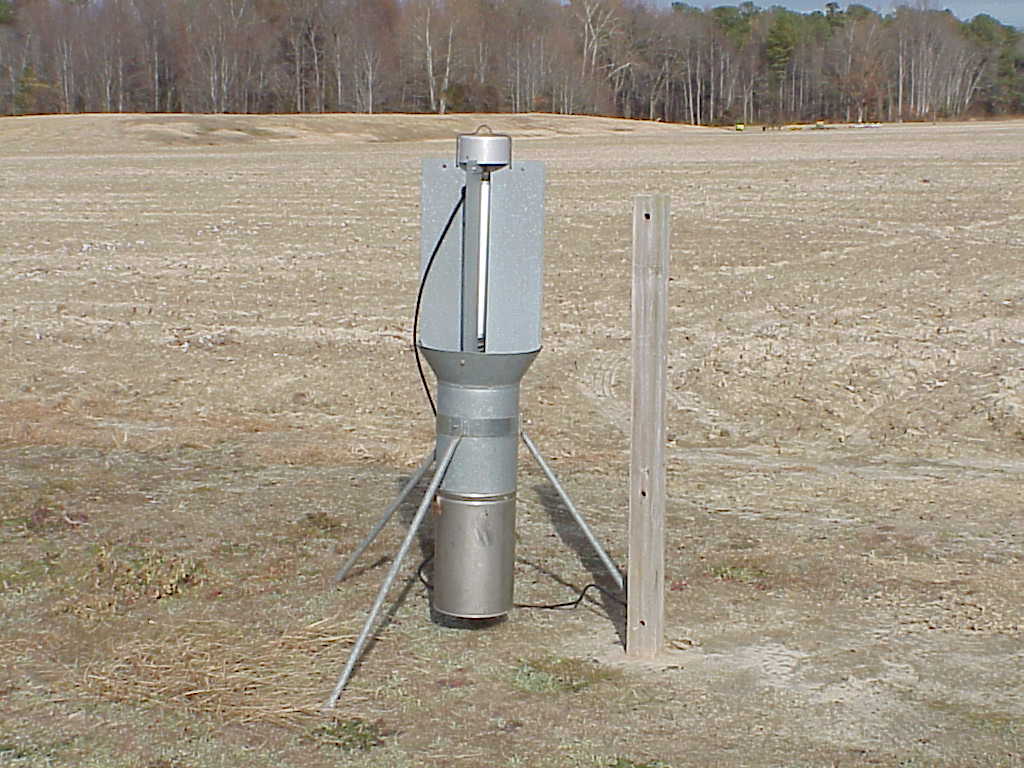
Black light trap report for the week ending September 18, 2014
Counts were low this week. The nightly average corn earworm moth counts were Warsaw-0.4, Petersburg-1.6, Suffolk-2.4, Prince George-Templeton-0.1, and Prince George-Disputanta-0.6. The Petersburg black light trap caught a mean of 1.6 brown marmorated stink bugs per night, Prince George-Disputanta had 0.1 BMSB, and there were zero caught at Warsaw, Suffolk, and Prince George-Templeton. Please see the attached tables for trap histories. Thank you. BLT_18_Sep_2014
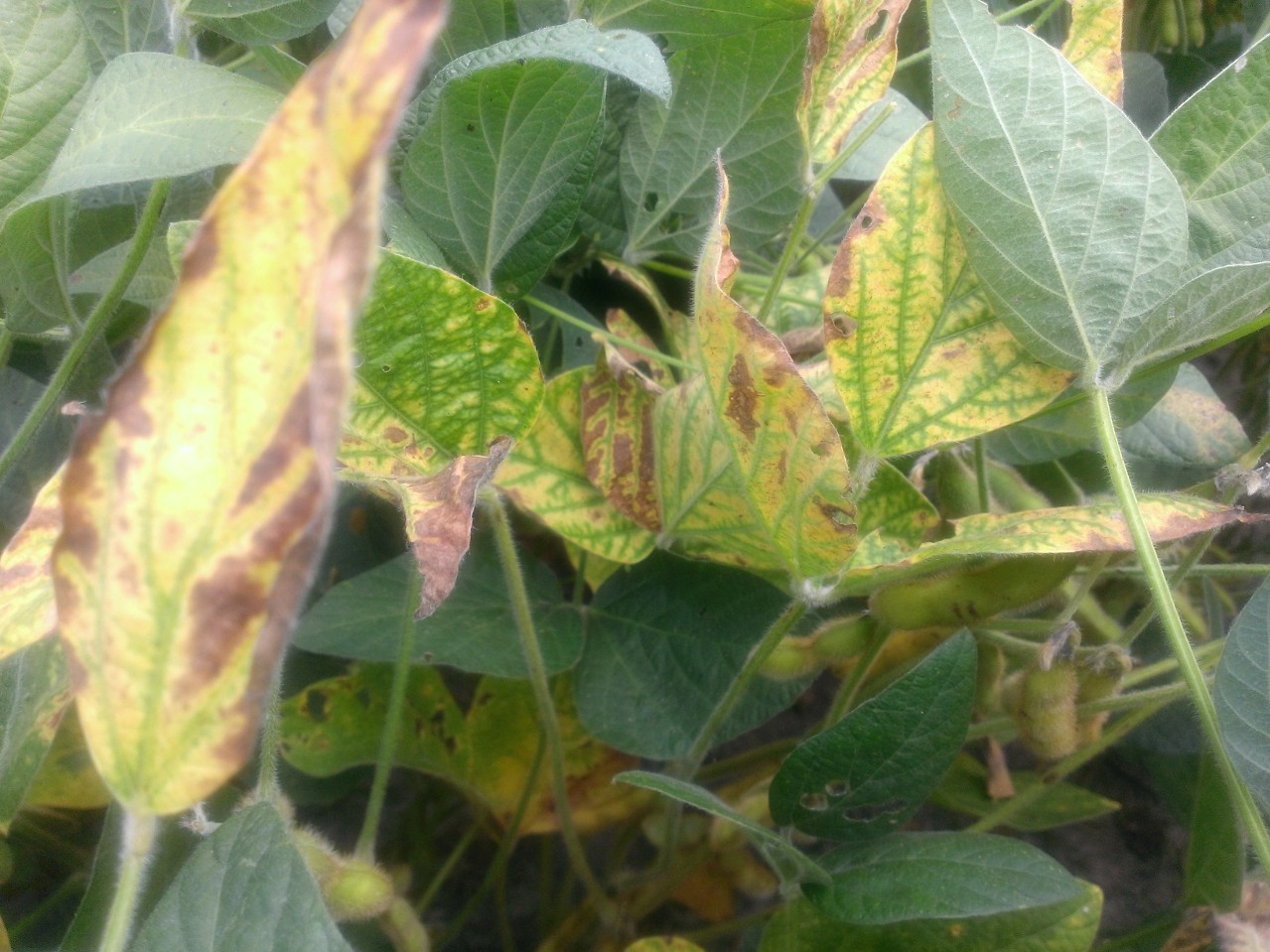
Sudden Death Syndrome and Brown Stem Rot Showing Up in Virginia Soybeans (David Holshouser & Hillary Mehl)
Many fields are exhibiting symptoms of interveinal chlorosis and necrosis. In the some areas (hot spots), leaves are burning up and dying. In the worse fields, entire plants are dying. Sometimes the leaves are falling off the petiole; in other cases, the leaves remain attached. The symptoms look similar to, but usually worse than, various nutrient deficiencies. Actually, what is occurring is very similar to a nutrient deficiency in that something is restricting the roots and/or vascular system from moving water and nutrients through the plants. If you start seeing such symptoms, dig some roots and examine them. Then, split the stem and tap root. If you see any discoloring, then you likely have a stem/root disease.
Is this sudden death syndrome (SDS)? Maybe. We tend to hear a lot about this disease in the media, in a seed catalog ratings, and throughout many extension bulletins in the Midwest. Although the name makes the disease sound like the entire field is getting ready to die, this is not usually the case. Up until this year, SDS was neither devastating nor widespread in Virginia. However, we are seeing more than the usual cases this year.
It appears that the disease spreads suddenly; you don’t see it one week, but the parts of the field begin dying the next. In reality, it has been building up slowly as the season progresses. The infection actually took place much earlier in the year. Regardless, SDS will rarely result in widespread death of the soybean crop. Instead, you will usually see it in spots and patches in the field. Worth noting is that SDS is commonly associated with soybean cyst nematode infestations. So, if your field has been diagnosed with SDS, then you may want to sample for nematodes. Below is a photo of one of our on-farm soybean variety tests. It is one of the worst cases of SDS that I have ever seen. Although a few varieties are more tolerant to the disease than others, it appeared to affect all of the varieties to some extent.
Although SDS is turning up in several fields this year, the same above-ground symptoms are also association with brown stem rot (BSR), which has been the most common root/stem disease in Virginia. Some of the plant samples that have come through our plant pathology lab have been diagnosed as BSR. It usually doesn’t cause widespread death and it usually limited to small spots or patches in the field. In general, it will not continue to spread over the rest of the field; however, the patches will enlarge over time. Yield loss is usually minimum and restricted to the infected areas.
As mentioned earlier, if plants begin suddenly showing above-ground symptoms, dig the roots and split some stems. If the pith (center) of the stem and taproot right at the soil level is brown, then the cause is likely (but not always) BSR. If you see a white pith and the rest of the root is brown, then the disease could be SDS. Another diagnostic tool is to look at the leaves. If the leaflets fall off but leave the petiole attached to the stem, it is likely SDS. if the leaves don’t fall, it’s likely BSR. Finally, you’ll seed more rotted roots with SDS. But, to find the rotted roots, you’ll need to dig them up and wash the soil from the roots. Jerking the plant out of the ground will likely strip off most of the roots.
The last disease that could be a problem and exhibit the same symptoms is red crown rot (in peanut, this is called cylindrocladium black rot or CBR). This disease can however be recognized by red fruiting bodies found at the base of the stem. Red crown rot was more common when Virginia’s peanut acreage was greater and soybean and peanut were being rotated with each other.
Regardless of the disease, what can you do about it? Unfortunately, there is nothing that can be done this year. Foliar fungicides will not control a disease that is inside the stem and roots. But, in the future, rotate out of soybean for one or more years. Also, you may want to select a variety with resistance to that disease when you plant soybean in the field. Finally, as mentioned earlier, take a nematode sample. Just because you’re seeing SDS or BSR in your field this year doesn’t mean that you have nematodes. But anything that is restricting root growth could aggravate SDS or BSR; therefore the symptoms would be more evident in fields infested with nematodes.
SOYBEAN LOOPER ALERT
Soybeans in parts of North Carolina, especially in their eastern ‘Blacklands’, have been plagued by soybean looper infestations for a few weeks. I got the first report of infestations on our Eastern Shore earlier this week, and today, I got a report of a field hit in Southampton County.
Soybean loopers follow a pattern that we have seen in the past. They do not overwinter in Virginia so moths must migrate in from the south. Adult moths are transported short or long distances by weather fronts. It is not uncommon to find a few soybean loopers in any given field, any time during the season. But it is fairly uncommon to have large flights. The pattern that I have seen, and the one that is playing out this year is that when large populations build up to our south, moths are transported to our area in large numbers—and—most commonly in mid-September.
Another important factor to be aware of is that almost invariably, these large flights result in large worm outbreaks IN FIELDS THAT HAVE BEEN PREVIOUSLY TREATED WITH PYRETHROIDS. Our current research is showing that pyrethroids are hard on beneficial insects and spiders that feed on looper eggs and small worms. If destroyed, a much larger percentage of looper eggs hatch and a larger percentage of worms survive.
So, if a looper infestation is discovered in a field, what is the threshold and what products provide the best control. We do not have a threshold for loopers but lump them into a general leaf defoliators ‘guild’ which can include many leaf eaters (Japanese beetles, green cloverworms, grasshoppers, bean leaf beetles and others)—and base a treatment decision on the total leaf area destroyed by the guild. We recommend not treating fields with fully developed seed unless 35-40% of the leaf area is eaten and bugs are still present.
We also know that soybean looper is a unique pest in that large numbers can completely defoliate a field in a short period of time, in as few as 5-7 days if numbers are really high. So here is a looper rule-of-thumb. Treat if you get 12-15 or more in 15 sweeps and the field has not reached full pod maturity (pods yellowing and seed getting hard).
Do not use a pyrethroid for loopers. These critters are hard to kill and the best success will be with non-pyrethroids like Belt at 3 oz, Prevathon at 14 oz, or Besiege at 10 oz. Other products that contain sinosad may also be effective.

Black light trap report for the week ending Sep. 11, 2014
Please see the pdf attached below (BLT_11_Sep_2014v2) for the corn earworm moth and brown marmorated stink bug nightly average catches in area black light traps. Thanks to the following for this week’s reports: Scott Reiter, Mary Beahm, Mark Kraemer, Keith Balderson, and Ames Herbert and his entomology team. BLT_11_Sep_2014v2
Corn earworm and BMSB black light trap catches for the week ending Sep. 4, 2014
Please click on the attached pdf document (BLT_4_Sep_2014) for tables containing the weekly corn earworm moth and brown marmorated stink bug black light trap catches. Thanks to the following for their reports this week: John Allison, Scott Reiter (Scott also found BMSB in Prince George soybean), David Moore, Mark Kraemer, Mike Parrish, and Ames Herbert and his entomology team. BLT_4_Sep_2014
BMSB and Kudzu Bug Update, Sept. 4, 2014
Although numbers are still generally very low, our field scouts and others have found BMSB and kudzu bug in a few new counties this past week. The eight new counties added for BMSB are Gloucester, Charles City, Hanover, Spotsylvania, Rappahannock, Prince George, Suffolk and Chesapeake (thanks Stan Winslow for the Chesapeake report). The two new kudzu bug counties are James City and King William (thanks Paul Bodenstine for the King William report). See the maps below for the most recent distributions. Although there may have been a few fields treated for these pests, as far as I can determine most have not. We know of one grower in Campbell County who had some threshold numbers but only in a few patches along one field edge. He elected to spot treat only these patches and so far, our post treatment visits have shown that this strategy was successful, that is, no reinfestation and no spread.

Late Blight Found in Floyd County
Late blight has been confirmed on tomato in Floyd County, VA, by the Virginia Tech Plant Disease Clinic. Potato and tomato growers should take precautionary actions and increase scouting. Cool and wet conditions favor development of this disease and fungicide sprays should be in place before the disease is present in a field or garden. For more information on late blight and late blight management, refer to the Extension publication available at: http://pubs.ext.vt.edu/ANR/ANR-6/ANR-6_pdf.pdf . Late blight was previously identified in Loudoun County, VA, on July 22; Rappahannock County, VA, on August 8; and Montgomery County, VA on August 20.
Corn earworm update: few moths but with high tolerance to pyrethroids
Although we hear rumors of worms in soybean fields, our scouting does not confirm this. We are finding almost none in either full season or double crop fields—and others are reporting the same. The full season crop is quickly approaching the ‘safe’ zone, that is, the point where pods are too tough to be attractive to insect pests. But, the summer is not over yet. Because corn is slow to dry down this year, we may still see a corn earworm moth flight into soybean fields, and if this happens, double crop fields would be a primary target. This is also true for stink bugs. As we get into late summer and early fall, stink bugs will be attracted to double crop fields. We strongly recommend that you begin checking double crop fields.
Because of the very weak corn earworm moth flight, we have not been able to capture and test nearly as many moths for pyrethroid tolerance as we have in the past. But all indications are that levels are high (see the graph below). In the most recent sample more than 40% survived the vial challenge. If this high pyrethroid tolerance level coincided with a large flight the large numbers of worms in fields, we would no question be recommending non-pyrethroids. But with this weak flight and the low numbers of worms in fields, I think we can get decent enough control with high rates of pyrethroids, alone.

